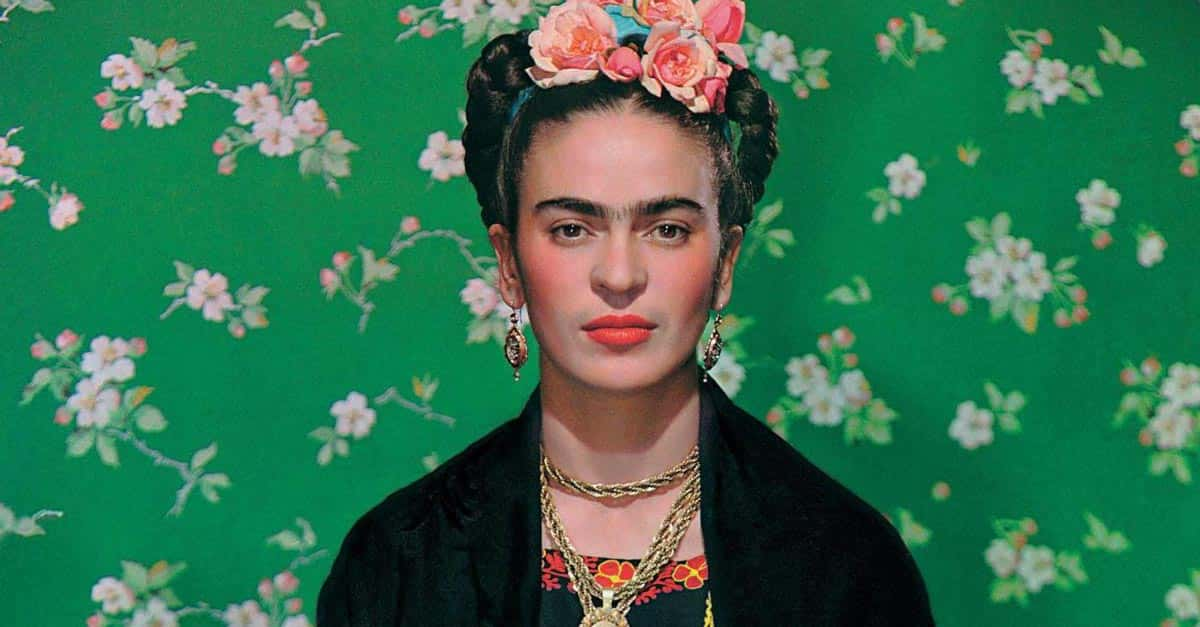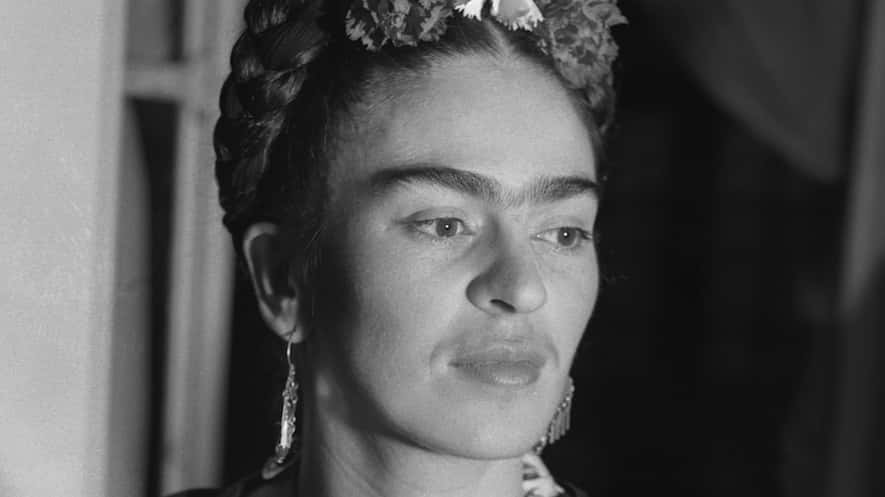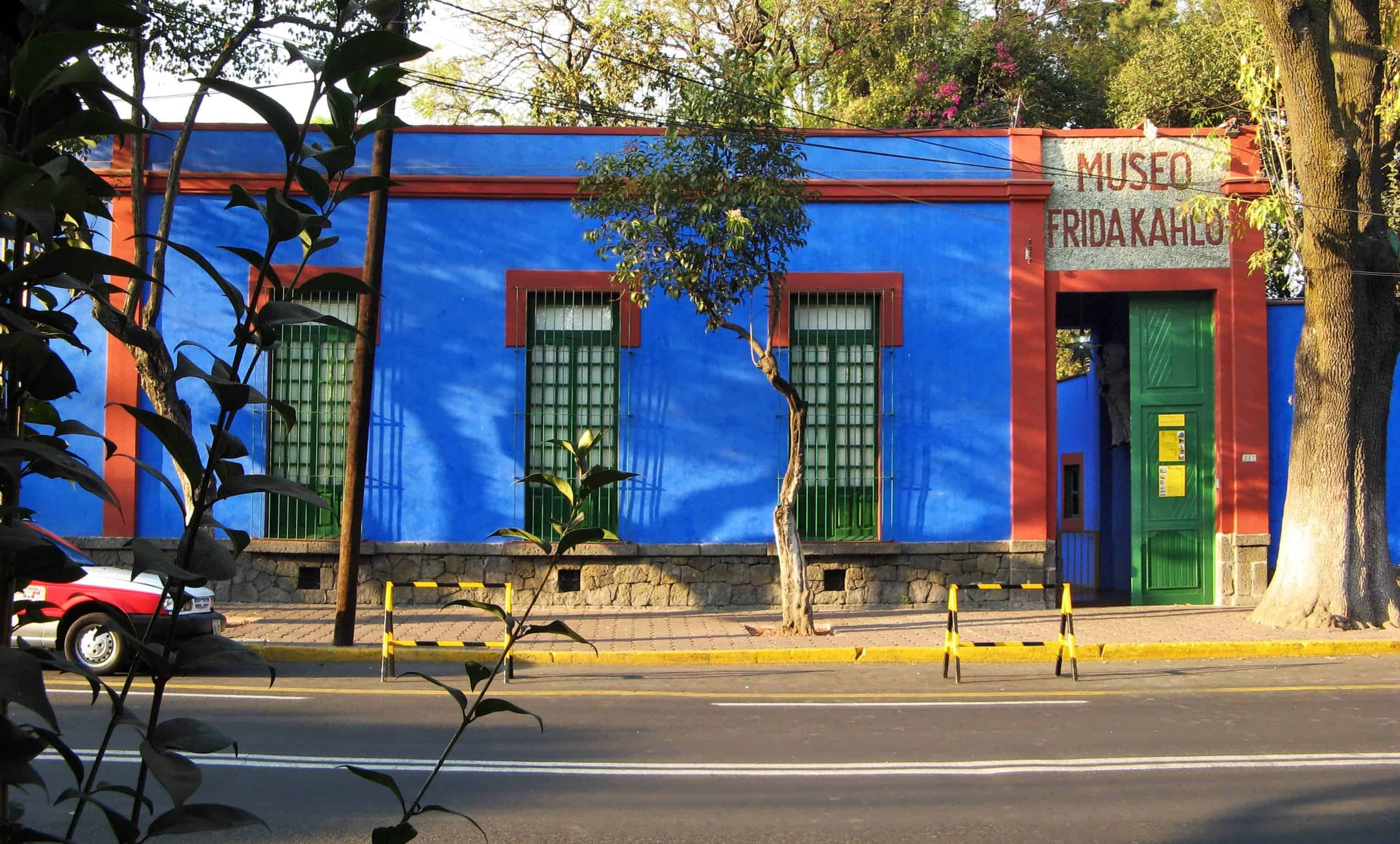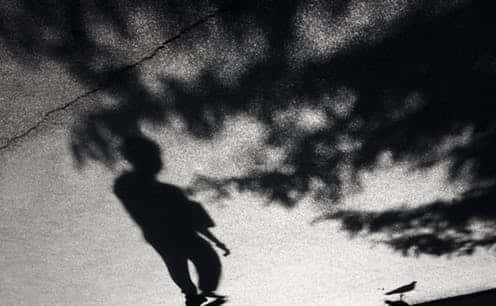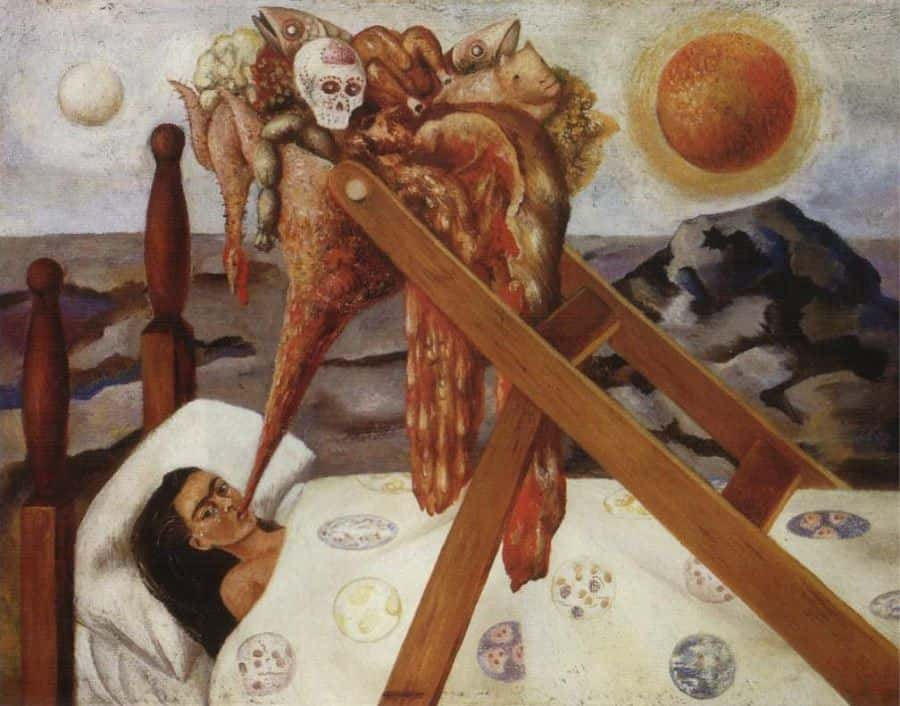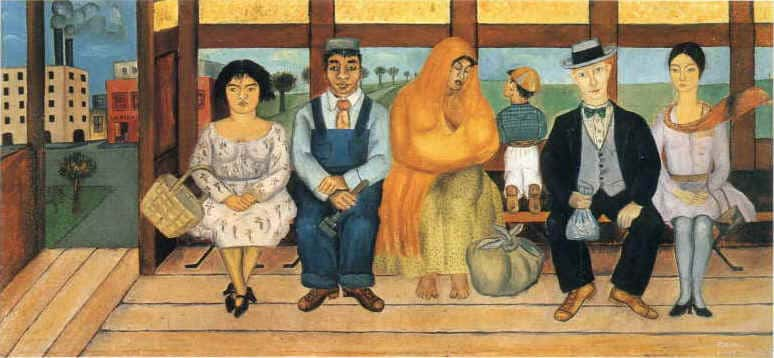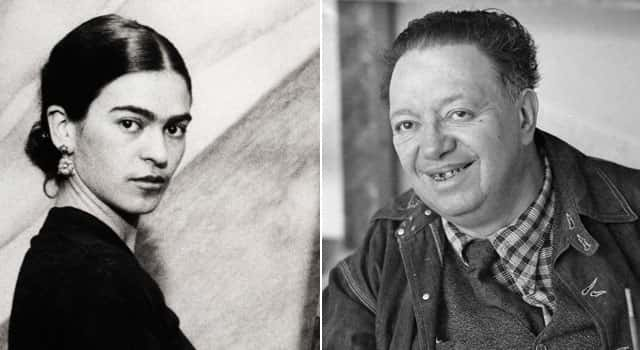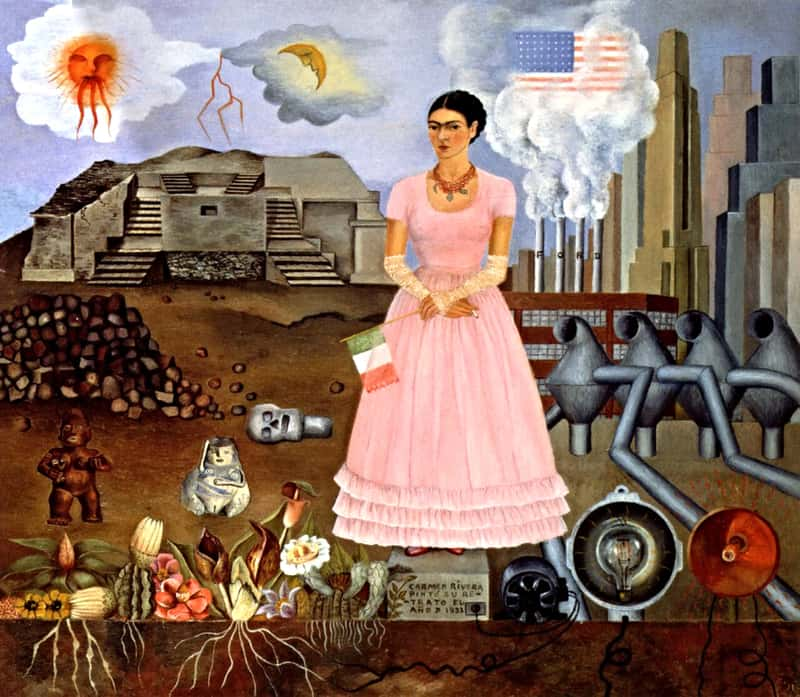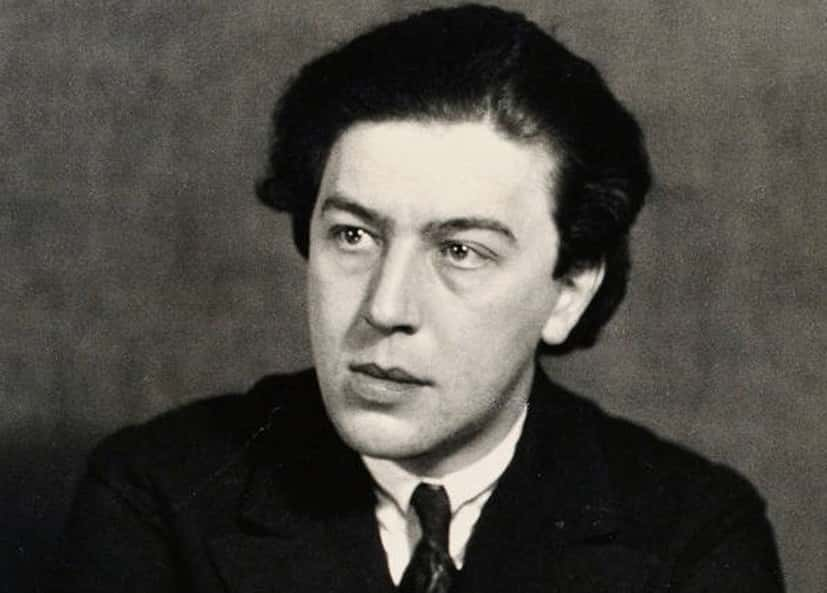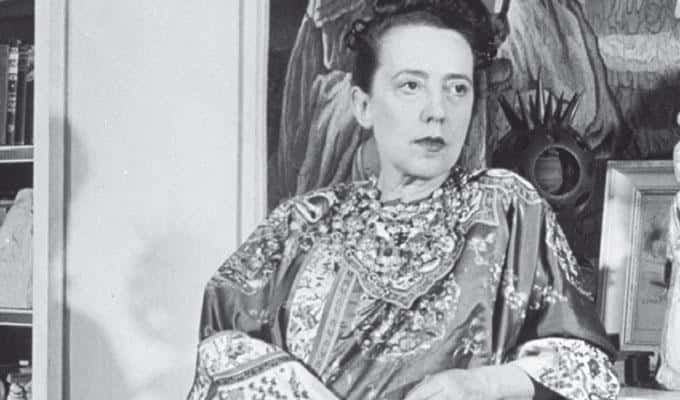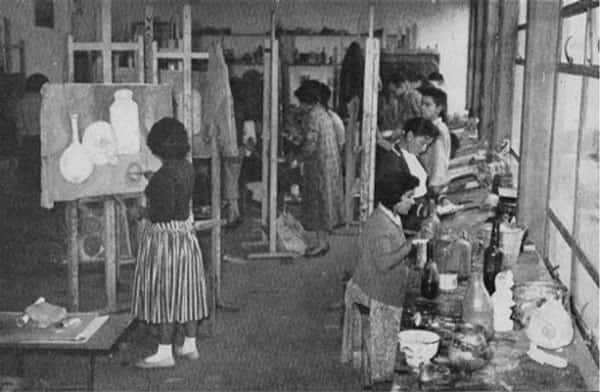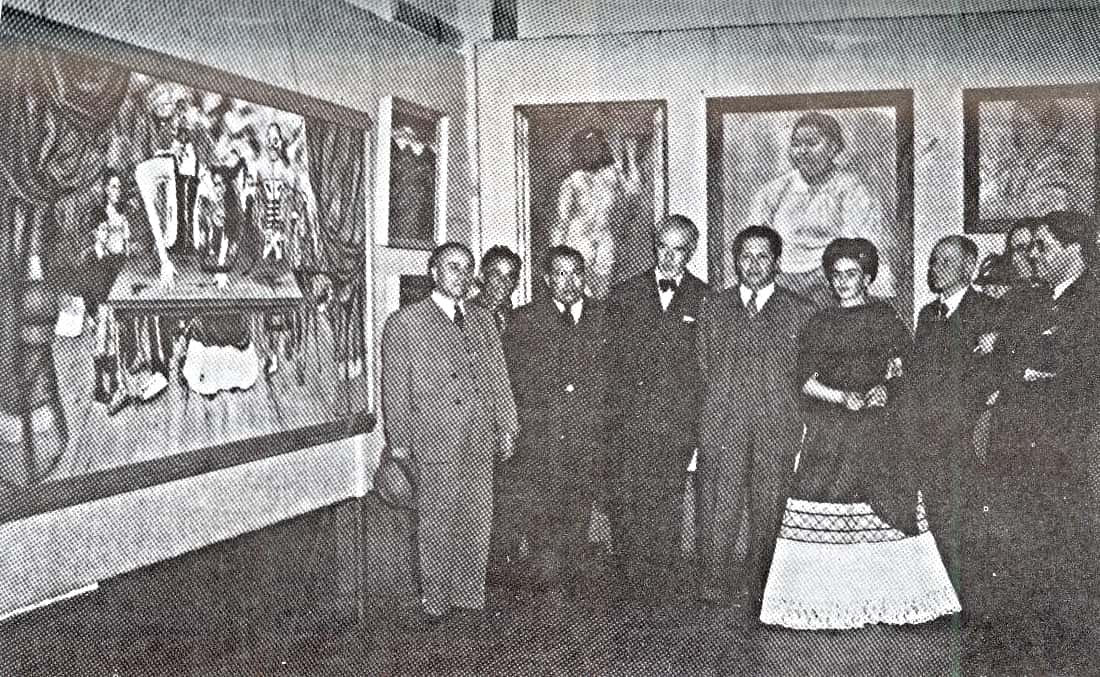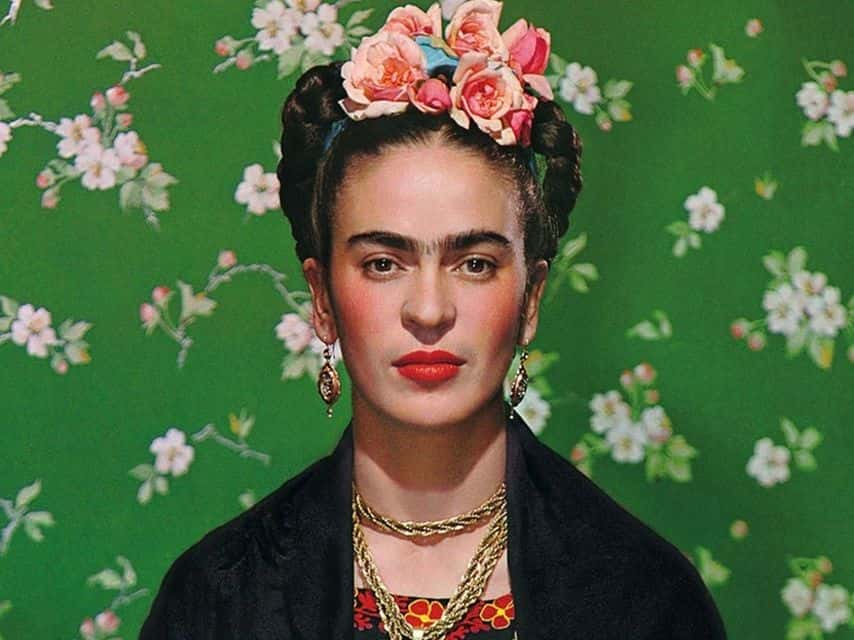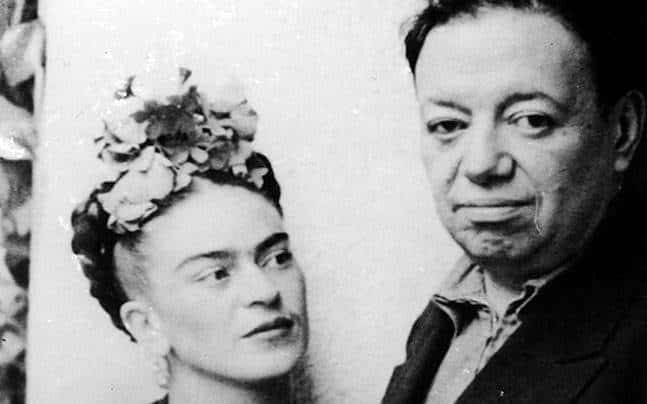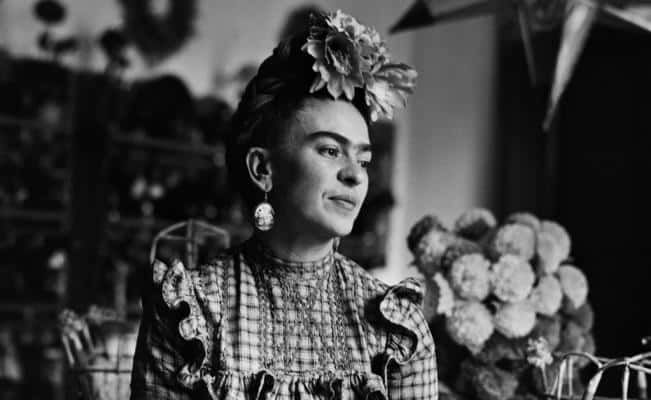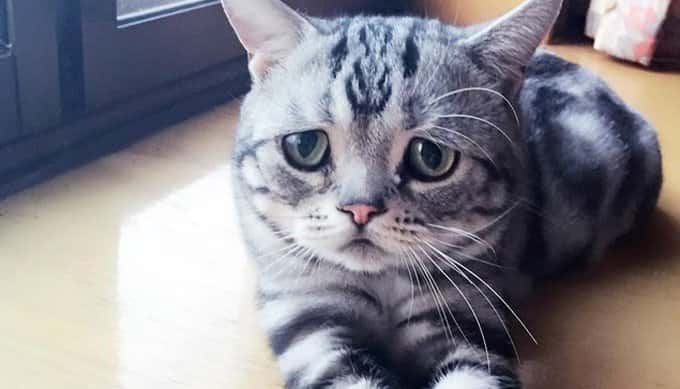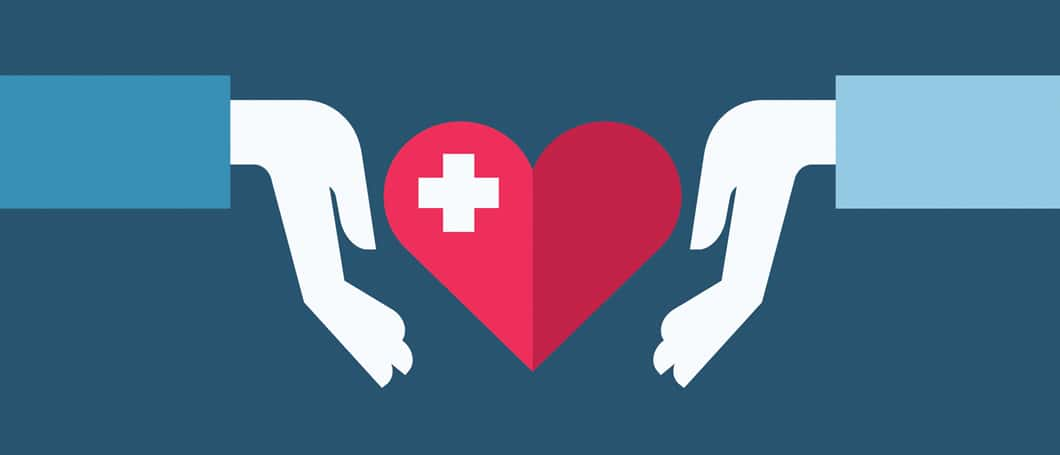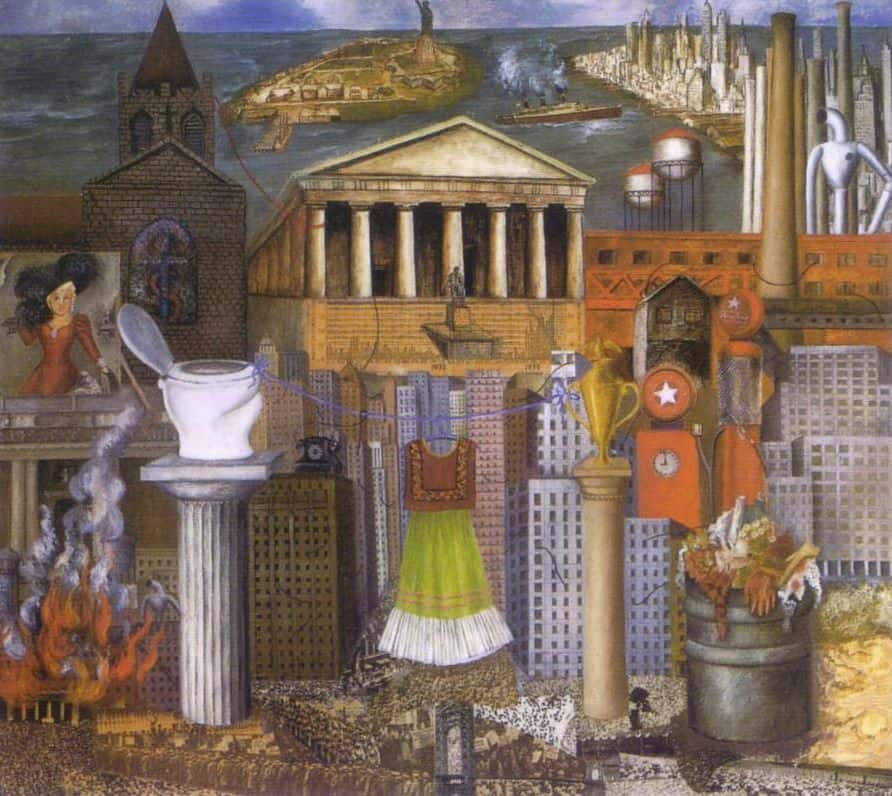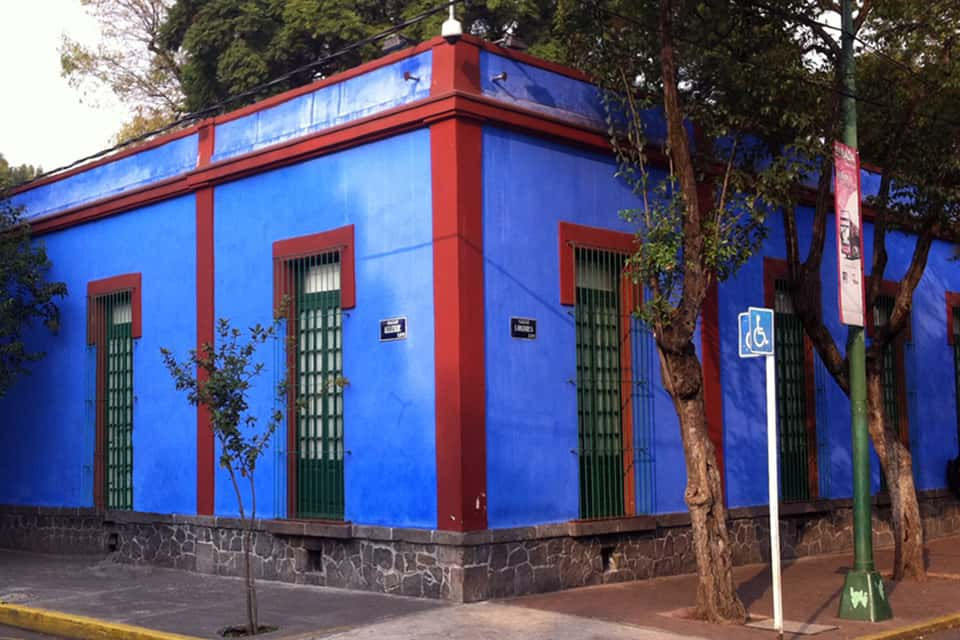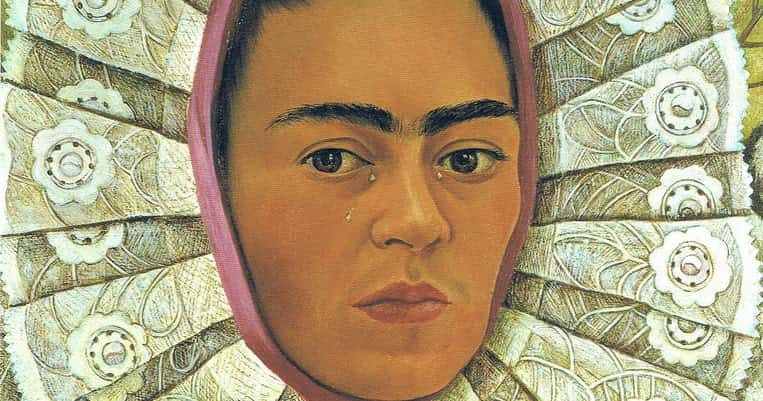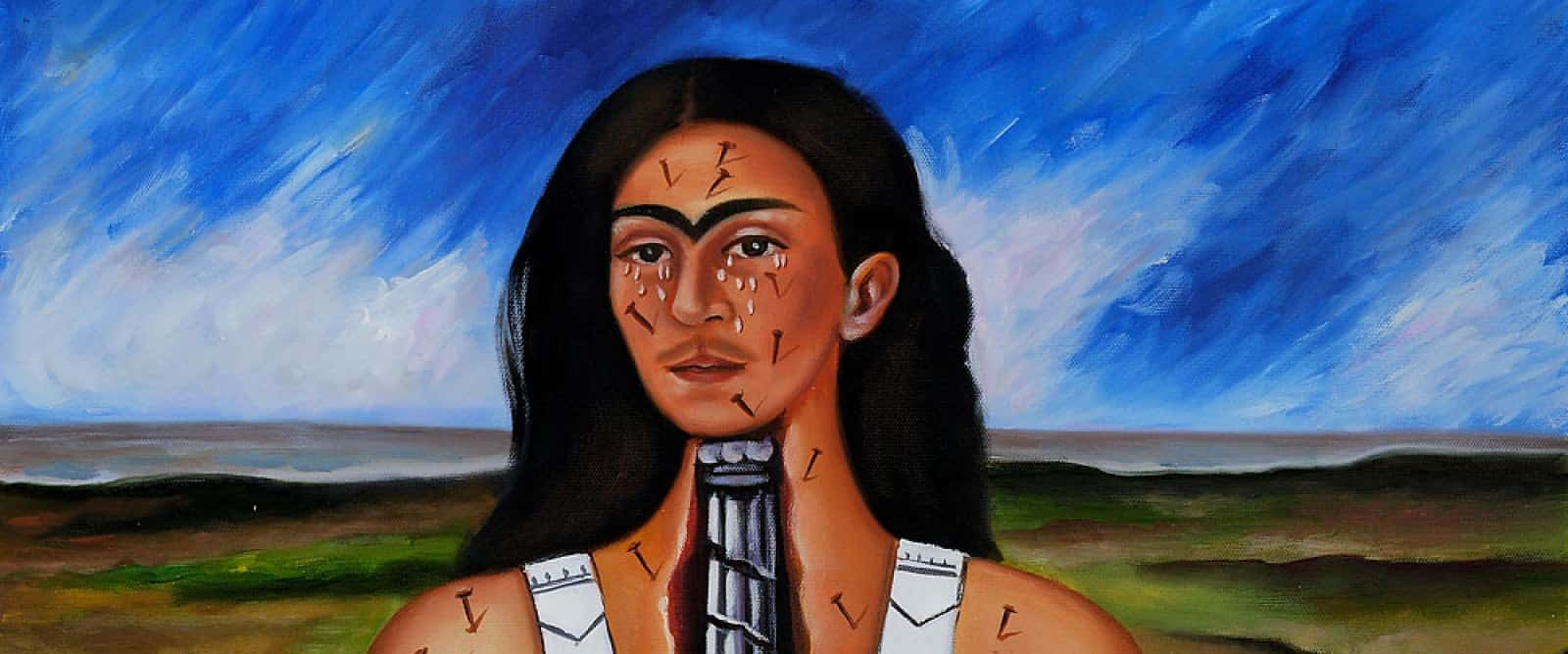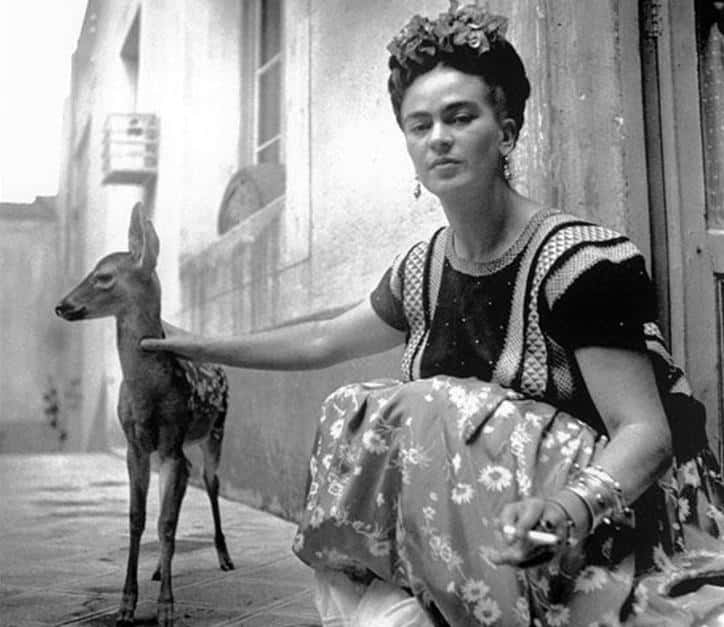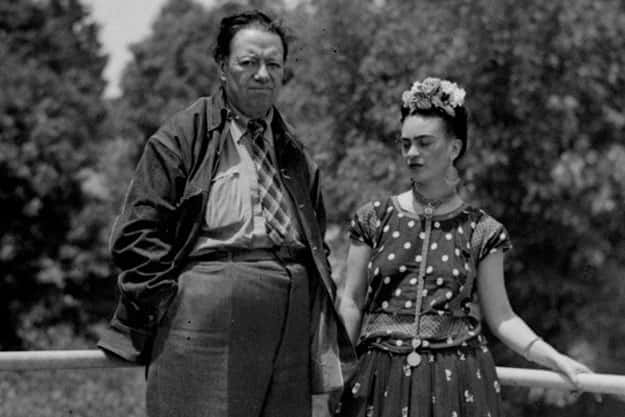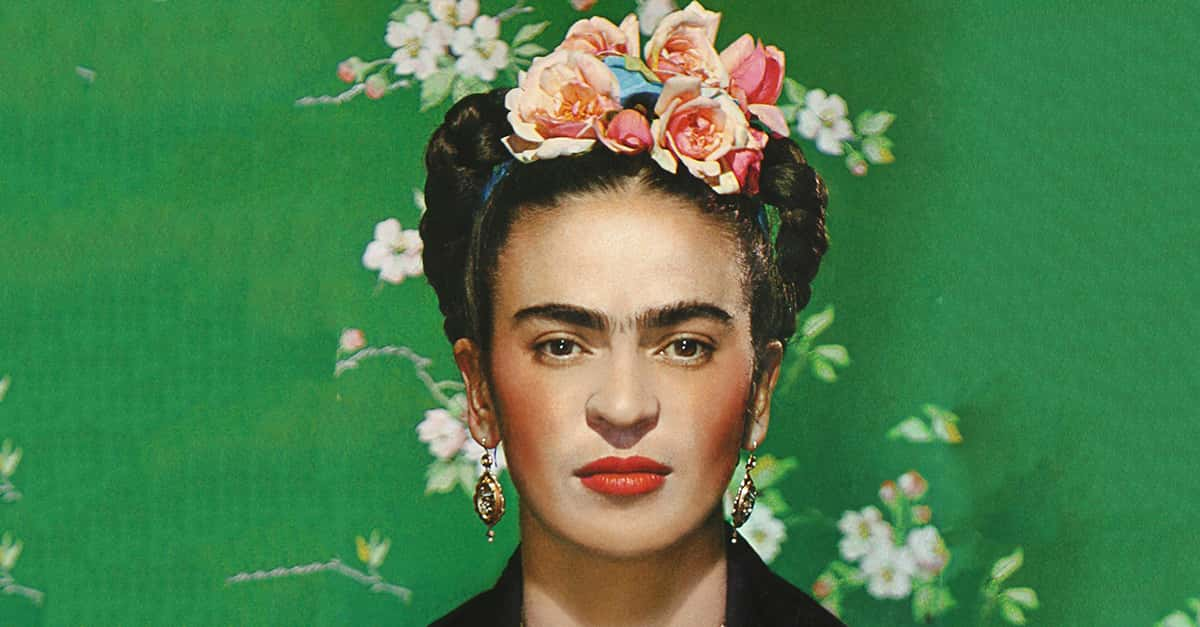“I never paint dreams or nightmares. I paint my own reality.”—Frida Kahlo.
Today Frida Kahlo is almost a household name for her contributions to the art world, but many of us know her best for her self-portraiture. Kahlo’s self-portraits only make up about a third of her work, but they are her most famous and for good reason. There is something so raw and timeless about Kahlo’s paintings of herself that we can probably all identify with. For many Kahlo is an icon of feminism, Mexican identity, living with a disability, political activism, and the list goes on. Her paintings question race, gender, postcolonialism, class, Mexican heritage, and more. Although she had some success and recognition in her life, Kahlo was most celebrated years after her death and she never got to witness her worldwide fame. What follows are painful and beautiful facts about one of the most inspiring and motivated individuals in recent history.
Frida Kahlo Facts
42. What’s in a Name?
The influential artist we now call “Frida Kahlo” was born Magdalena Carmen Frida Kahlo y Calderón. She was born in 1907 in a village just outside Mexico City. Her birthplace is disputed. She says she was born at home in what her family called “La Casa Azul,” or “The Blue House,” but official records say she was born nearby in her grandmother’s home.
41. A Picture’s Worth a Thousand Words
Kahlo’s father Guillermo was a photographer, so perhaps that’s where she got her keen artistic sense from. Guillermo moved to Mexico from Germany due to a battle with epilepsy that prevented him from continuing his studies. Kahlo’s mother Matilde was born in Mexico to a Spanish mother and an indigenous father. She gave birth to four daughters with Guillermo including Kahlo.
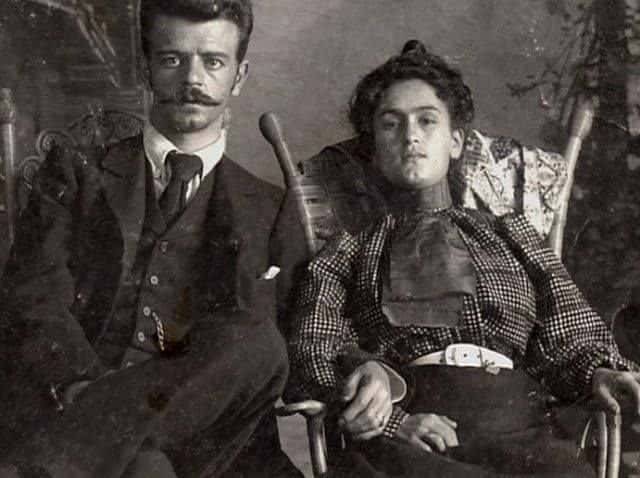 Pinterest
Pinterest
40. Oh, Mother
Kahlo did not have an especially pleasant upbringing. Not only did she grow up with three sisters, which is enough to drive anyone crazy, but both of her parents were frequently sick. Her mother was kind and smart but she was also both religious and manipulative, which put tension on her familial relationships.
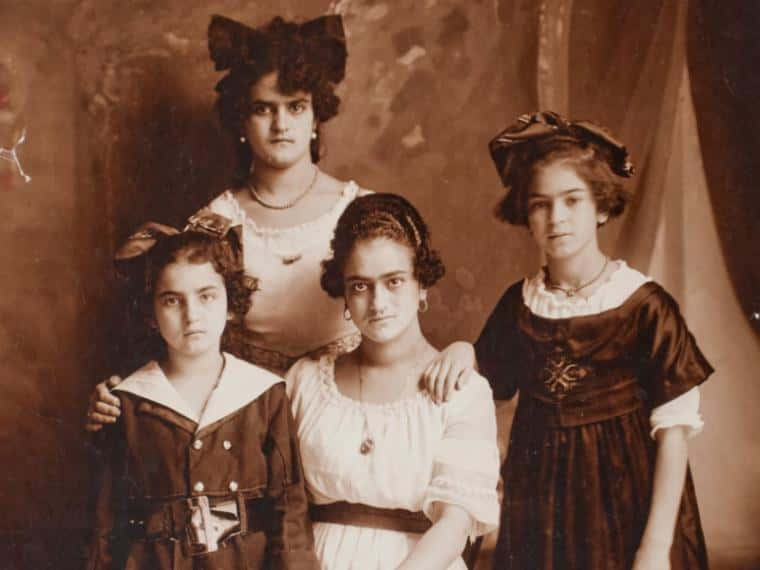 muyhistoria.es
muyhistoria.es
39. See the Sites
The Blue House in Coyoacán where Kahlo spent most of her life is now open to the public as a museum named after the painter herself. The museum is situated in a beautiful old neighborhood and features many of Kahlo’s personal items and paintings. If you ever find yourself in the area, it’s one of the most popular museums in Mexico City.
38. Important Independent Introvert
Seeing Kahlo’s art is an especially breathtaking experience when you consider how much pain and suffering she went through throughout her life. It’s amazing we have as much work by her as we do. When the artist was only six years old, she contracted polio, causing her right leg to become shorter and thinner. Perhaps because of her physical deformity, Kahlo was treated poorly by her classmates and she was kept away from other kids her age for months at a time. Her traumatic childhood made her an introverted individual.
37. You Got a Friend in Me
One positive aspect of Kahlo’s childhood was her relationship with her father. Her father empathized with her medical condition because he was also living with a disability, so he took her under his wing. He encouraged her to participate in sports, even though they were seen as an activity for boys, and let her help him with his photography work. The most influential aspect of his relationship with her was his total understanding of what she was going through.
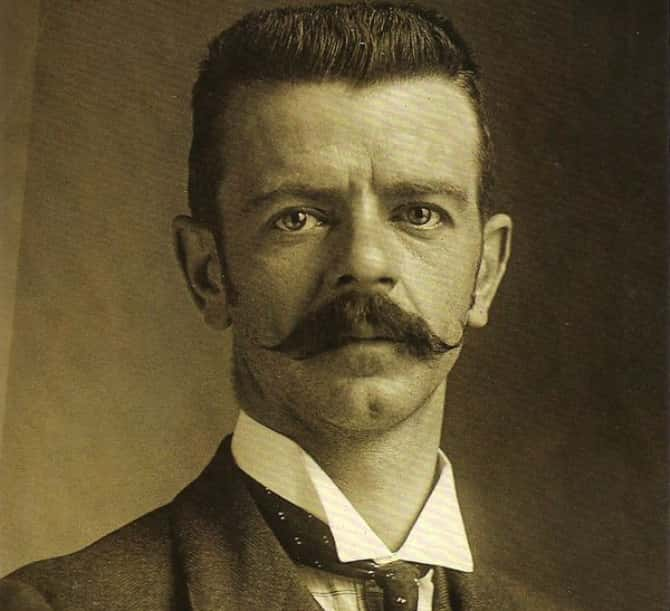 Pinterest
Pinterest
36. Salt in the Wound
To add insult to injury, one day when Kahlo and a boyfriend were on their way home from school, their bus ran into a streetcar, killing a number of the passengers. Fortunately, Kahlo survived. Unfortunately, it took months for her to recover from her very serious injuries, isolating her again from her peers. Not only did she displace three vertebrae and fracture her legs, ribs, and collarbone in the accident, but she was also stabbed by an iron handrail that fractured her pelvic bone.
35. Silver Linings
Kahlo’s run-in with the streetcar, to put it softly, put a damper on the young girl’s life. She had to give up dreams of becoming a doctor and she spent the rest of her life in constant pain. As she recovered, though, she rediscovered art and started doing medical illustrations with an easel that was specially designed to fit over her bed.
34. Glass Half Full
A strong-willed person will never let anything get in the way of pursuing their goals. And Kahlo was one of those stubborn few that kept-on-keeping-on no matter what life threw her way. She treated her accident as a new beginning and started painting the world as she saw it. Outfitting the easel at her bed with a mirror in which she could see herself allowed Kahlo to create paintings that questioned existence and identity.

History's most fascinating stories and darkest secrets, delivered to your inbox daily.
33. Paint What You Know
Kahlo’s early paintings were inspired by European Renaissance artists like Botticelli and avant-garde artistic movements like Cubism. The content of these paintings were the people around Kahlo, like her sisters, her school friends, and most famously, herself.
32. Write Like a Girl
Before her terrible traffic accident, Kahlo was accepted to the National Preparatory School for natural sciences. Out of 2,000 students at the school at the time, only about 35 of them were girls. Not letting that stop her, Kahlo was an excellent academic and had her sights set on becoming a doctor.
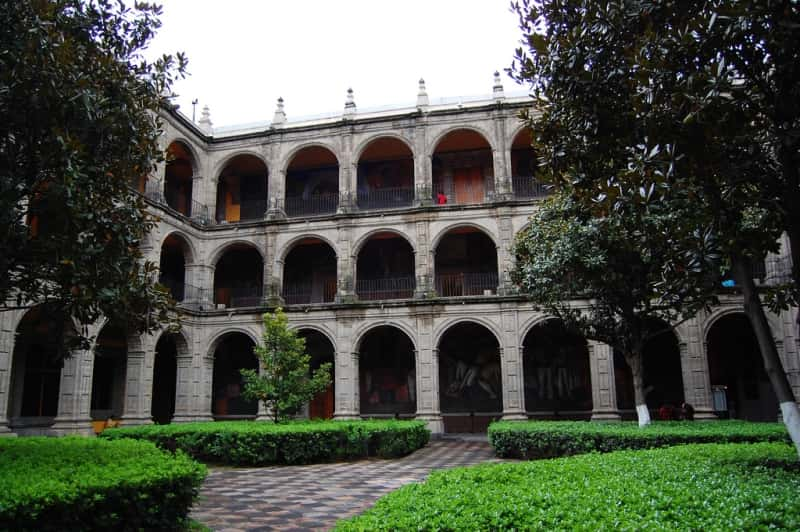 The British Society for the History of Science
The British Society for the History of Science
31. Anything You Can Do We Can Do Better
During her time in school, Kahlo was involved in a small political group with nine of her classmates called the Cachuchas. Her fellow group members became the subjects of one of her paintings and her time in school generally got her more interested in political activism and social justice in Mexican culture. The school itself took pride in a new sense of Mexican identity called indigenismo that centered on indigenous heritage and rejected any sense that Europe was better than Mexico.
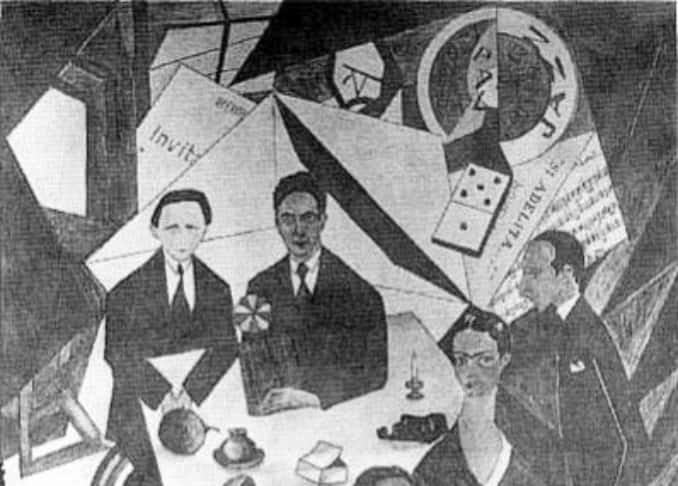 Pinterest
Pinterest
30. I’m 29… Again
If you lie about your age, there’s no need to be ashamed of it, because so did Frida Kahlo. She wanted her classmates to accept her as a “daughter of the revolution” so she lied and said she was three years younger than she really was. Even after she finished school she maintained the lie.
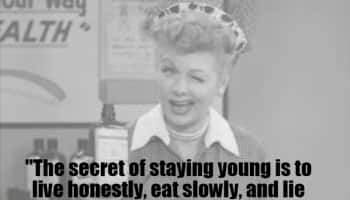 The Daily Rantings of a Stoic - WordPress
The Daily Rantings of a Stoic - WordPress
29. Takes One to Know One
Kahlo had to start her school career a little later than her friends because of her illness. She ended up starting at the same time as her younger sister, but they were homeschooled through grades five and six. Although the rest of her sisters were sent to a convent school, Kahlo’s father had different plans for her. She was enrolled in a German school, but like all great minds, she was a bit of a troublemaker. She got herself expelled pretty quickly!
28. Prince Not-Always Charming
Picture it: a celebrated muralist who isn’t like other men. He’s big and strong, but he doesn’t buy into traditional Mexican ideas about masculinity, where women are dominated by men. Most importantly, he’s filthy rich and can pay for all those expensive medical bills you’ve been racking up. Who wouldn’t want to marry into that? Diego Rivera was Kahlo’s one husband in life, but he had a darker side as well.

27. Dark Secrets Revealed
He was a self-confessed womanizer and already had two common-law wives at the time of their marriage. Kahlo’s mother rejected the marriage and it ended up being quite turbulent at times.
26. On the Road Again
After her marriage, Kahlo spent many years traveling between the United States and Mexico with her husband. In this time her art was developed and inspired by Mexican folk culture.
25. That’s Surreal
Believe it or not, Kahlo’s first ever solo art show was coordinated by the surrealist artist André Breton. The event took place in 1938 in New York to positive feedback. It went so well that the following year she completed another solo art exhibition in France, which sadly wasn’t received as well.
24. You Go Girl!
Despite the fact that her exhibition in France didn’t go so well, the prestigious Louvre purchased one of her paintings titled “The Frame.” Kahlo was the first Mexican artist ever to be featured in their gallery.
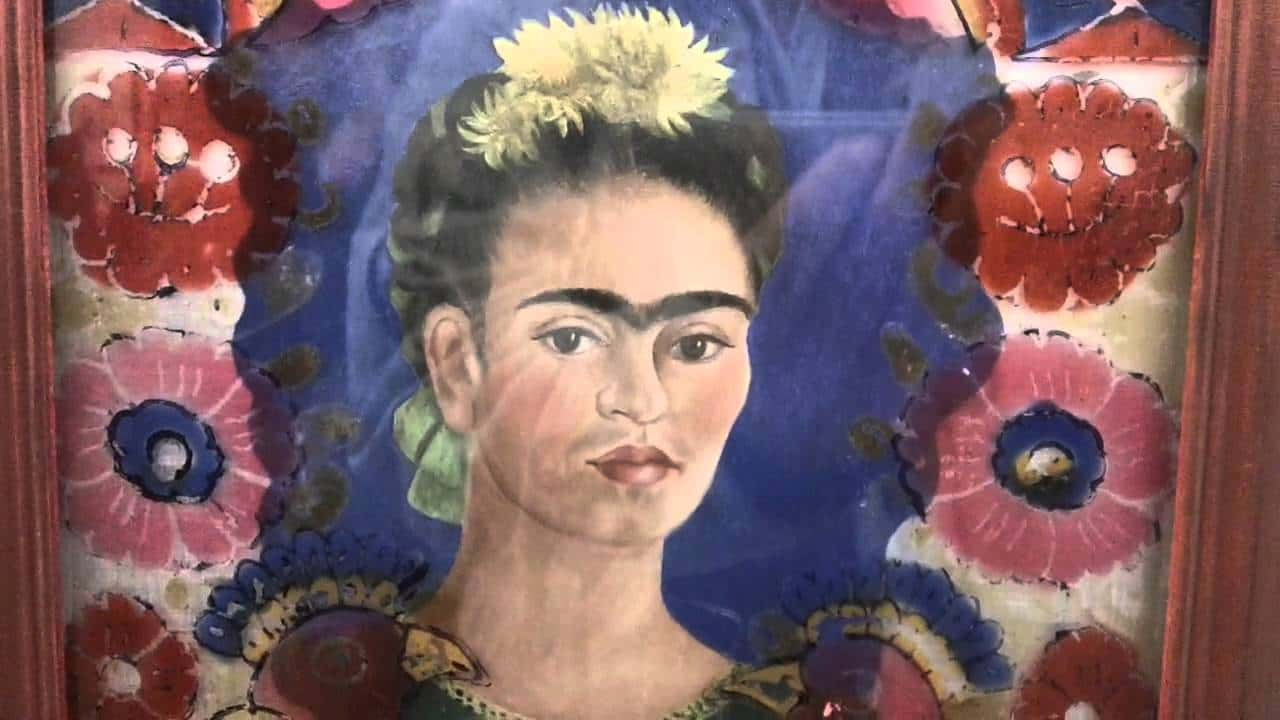 YouTube
YouTube
23. Fashion Requires Sacrifice
When Kahlo went to France to show her art there was an unforeseen benefit: artists who lived or showed in Paris like the famed Pablo Picasso greeted her with fondness. She also caught the attention of the fashion designer Elsa Schiaparelli, who created a dress inspired by Kahlo which got her into the pages of Vogue.
22. Even Those Who Can Do Teach
Kahlo did not stop at being a popular artist, she also worked as a teacher of art in the 1940s at “La Esmeralda” or Mexico’s National School of Painting, Sculpture and Printmaking. She was also ahead of her times in the world of pedagogy. Her classroom was a non-hierarchical environment with an informal atmosphere. The students learned to appreciate Mexican culture and traditional art and find their subjects simply out on the street.
21. A Last Supper of Sorts
Kahlo’s teaching career and her presence as a solo artist in Mexico were brief, due to her death at the age of 47. She had one solo exhibition in Mexico in 1953, the year before her passing.
20. If You’ve Got it, Flaunt it
Kahlo did not just ooze Mexican identity and culture out of her artwork, she also performed and lived it every day for the world to see. She decorated herself in traditional indigenous Mexican clothing including long, colorful skirts and lots of jewelry. Kahlo was proud of her mestiza ancestry and wanted to let her pride show.
19. Step Aside, Mister
When Kahlo first moved to the United States she was still shy, introverted, and perhaps unsure of herself as an artist. She only introduced herself as the wife of Rivera, not an artist in her own right. Later, when the couple moved to Detroit, Kahlo was a lot more confident. She started speaking with the press and showing off her mastery of the English language. She even claimed at that time that, between her and her husband, she was the greater artist.
18. You Win Some You Lose Some
There were some things about America that Kahlo enjoyed, like all the advanced industrial and mechanical development. However, there were many more things she despised. She didn’t like socializing with capitalists. She didn’t like the class divide and watching the rich party while the poor slept on the street. She didn’t like the colonialist nature of American society. She didn’t like most of the people, who she thought were boring. The list goes on…
17. Artist for the Ages
Even after her death, Kahlo was known to the public as “Rivera’s wife.” It wasn’t until the 1970s that her work was rediscovered by political activists and art historians. Nowadays, Frida Kahlo is almost a household name, but few have heard the name Diego Rivera. In the 1990s Kahlo was frequently used as the face in Chicano, feminist, and LGBTQ movements. She is known today for her representation of the female form and her artistic celebration of Mexican identity.
16. Another One Bites the Dust
Although Kahlo never had children, she was pregnant more than once. The strong female artist was never sure about having a child of her own and her pregnancies resulted in an abortion and a miscarriage. Shortly after her baby died by miscarriage, her mother also passed away, making for an uncomfortable time away from Mexico for Kahlo.
15. Small, Symbolic, and Silent
The most famous Frida Kahlo self-portrait is entitled “Self-Portrait with Thorn Necklace and Hummingbird.” The content of the picture is exactly that, Frida Kahlo with butterflies in her hair, a monkey and a cat on her shoulder, and a thorn necklace with a hummingbird. The painting is quite small but incorporates many of Kahlo’s usual symbolisms and interests. In the portrait, her neck is slightly bleeding and she patiently endures the pain.
14. Youch, That Hurts
In the last 14 years of her life, Kahlo was increasingly isolated as her existing illnesses got worse and new ones piled up. She fell into a depression after her father’s death. She was treated for syphilis. She had a worsening infection on her hand. At different times, she had to wear 28 different corsets made of everything from plaster to leather to steel. These weren’t the kinky kind of corset, though, these were corrective corsets for her spinal condition.
13. To Each His Own
Much of Kahlo’s art was political in nature and that includes a piece called “My Dress Hangs There” which she painted during a period of discontent with American life. Her husband wouldn’t let them go home to Mexico because of the fame he enjoyed in America, so Kahlo painted to protest the superficiality of capitalism and the decay of important human values. On the exact opposite side of the coin, Rivera was busy at work with a mural celebrating industrial progress in the same America that Kahlo despised.
12. To Live and to Die
Kahlo is reported to have been born and died in the same building. The Casa Azul building was donated by Rivera to be used as The Frida Kahlo Museum and is still home to the urn that contains her ashes.
11. Like the Back of Her Hand
Of her famous paintings, probably the most famous of all are Kahlo’s self-portraits. In total, she painted herself 55 (official) times and they make up a third of her total artworks. Considering her isolation, it's unsurprising.
10. Pain and Portraits
In total, Kahlo went through 30 surgeries for her various ailments. One of the worst was the actual amputation of her foot because she developed gangrene. She depicted the fragility of her body and her frustrations towards it in a few of her self-portraits.
9. That’s Not My Name
At times in her career, Kahlo was called a surrealist. She didn’t take kindly to this label, though. Her paintings were not beyond reality, in fact, they were her reality, exactly as she saw it.
8. Sweet Ride
For her final solo exhibition, Kahlo rode up in style in the back of an ambulance. The doctors advised against her attendance, but Kahlo was always a bit of a rebel and she was excited to see her first exhibition in her home country.
7. Rainbow Colored Glasses
Frida Kahlo was bisexual and has been depicted in photos dressed in men’s clothing. She was truly a painter ahead of her time in many ways, including her openness about her sexuality. On the list of famous women she had affairs with was Josephine Baker, the vaudeville dancer.
6. That Place is a Zoo. Literally!
Kahlo’s household collected some seriously strange and exotic animals, including an ancient Aztec dog breed, two spider monkeys, a parrot, and an eagle.
5. No Monkey Business
Many of Kahlo’s paintings used the monkey as a symbol. Her monkeys, though were a symbol for protection, not lust, as is typical of Mexican mythology.
 Pinterest
Pinterest
4. Breaking Records and Taking Names
As recently as 2016 a Frida Kahlo artwork was put up for auction and sold for over eight million dollars. This was the highest amount any Latin American artwork had sold for in an auction.
3. Don’t Judge a Book by Its Cover
In 2004 Kahlo’s full wardrobe was rediscovered in the upper part of her childhood home exactly as her husband had requested they be preserved. After spending 50 years in isolation approximately 300 articles of clothing and medicine were put on display in an exhibition at the house museum called “Appearances Can Be Deceiving: Frida Kahlo’s Wardrobe.”
2. Ol’ Unfaithful
The bond between Frida and Diego was one marked by many infidelities on both sides of the marriage. The tipping point, though, was when Rivera had an affair with Kahlo’s younger sister. Kahlo left Rivera’s household and considered leaving him entirely, but eventually, she forgave them and moved back. That didn’t stop the affairs for either of them, though, and eventually, it was Rivera who requested a divorce. Although they divorced in 1939, their relationship continued on and off until her death, and his name frequently appeared in her diaries towards the end of her life. Rivera claimed that the day Kahlo died was the worst day of his life, and he died three years after her.
1. And the Academy Award Goes to…
Many books and movies have been made about Kahlo’s life including a semi-biographical film simply titled Frida. The film went on to win two Academy Awards. Kahlo just never stops being relevant!

